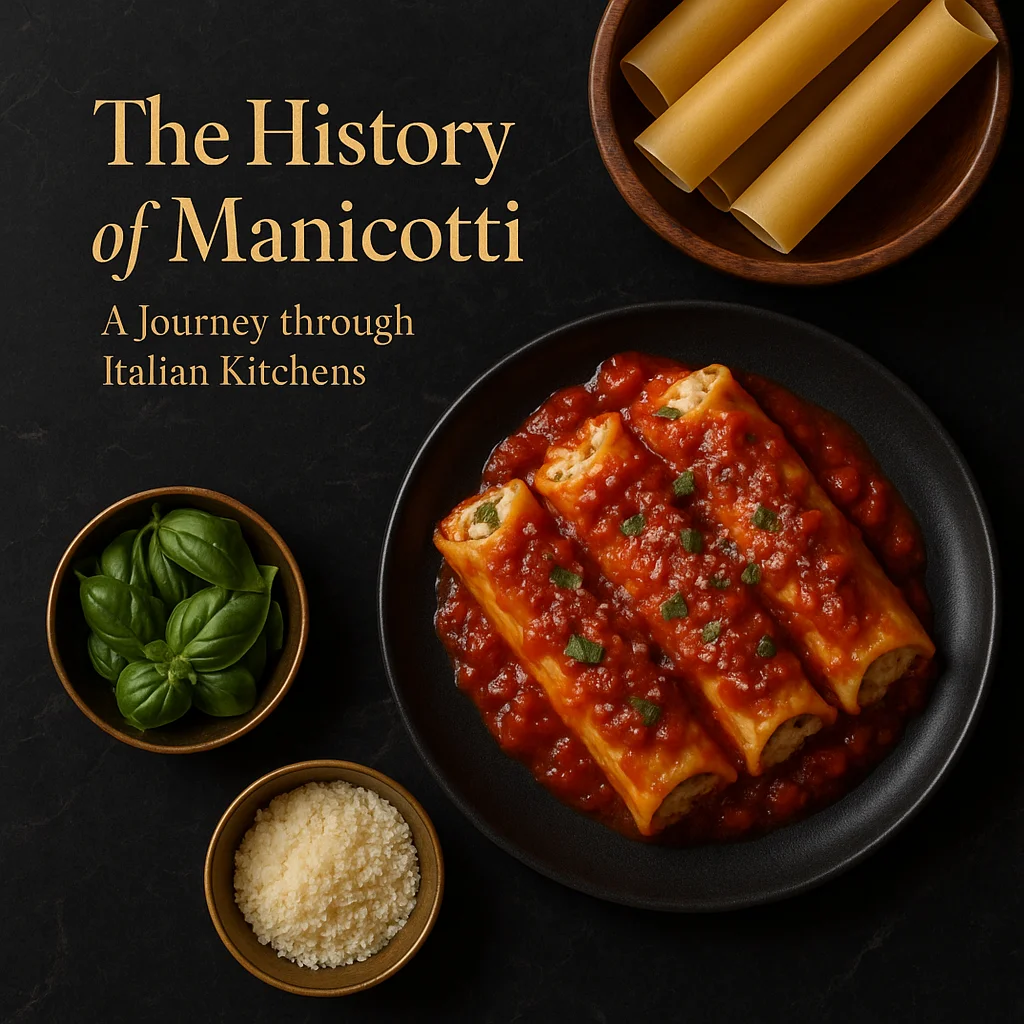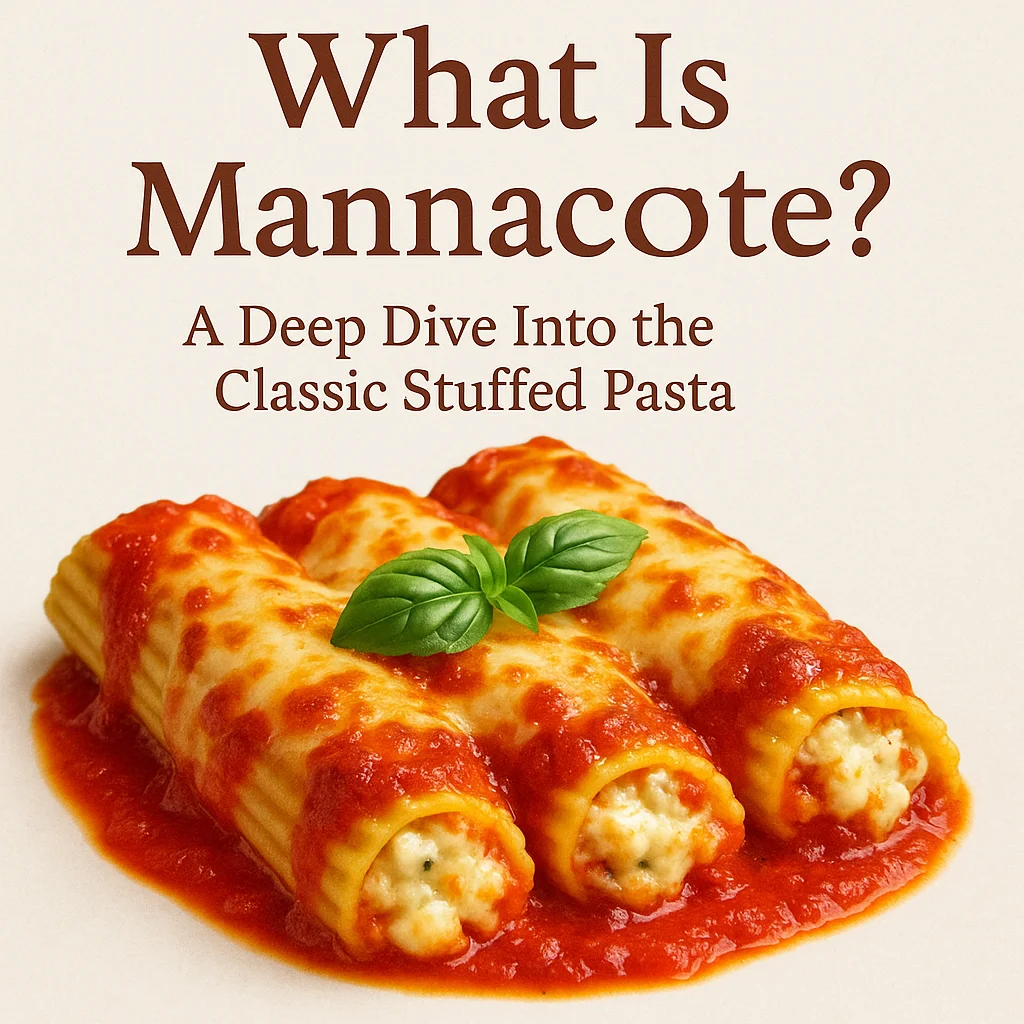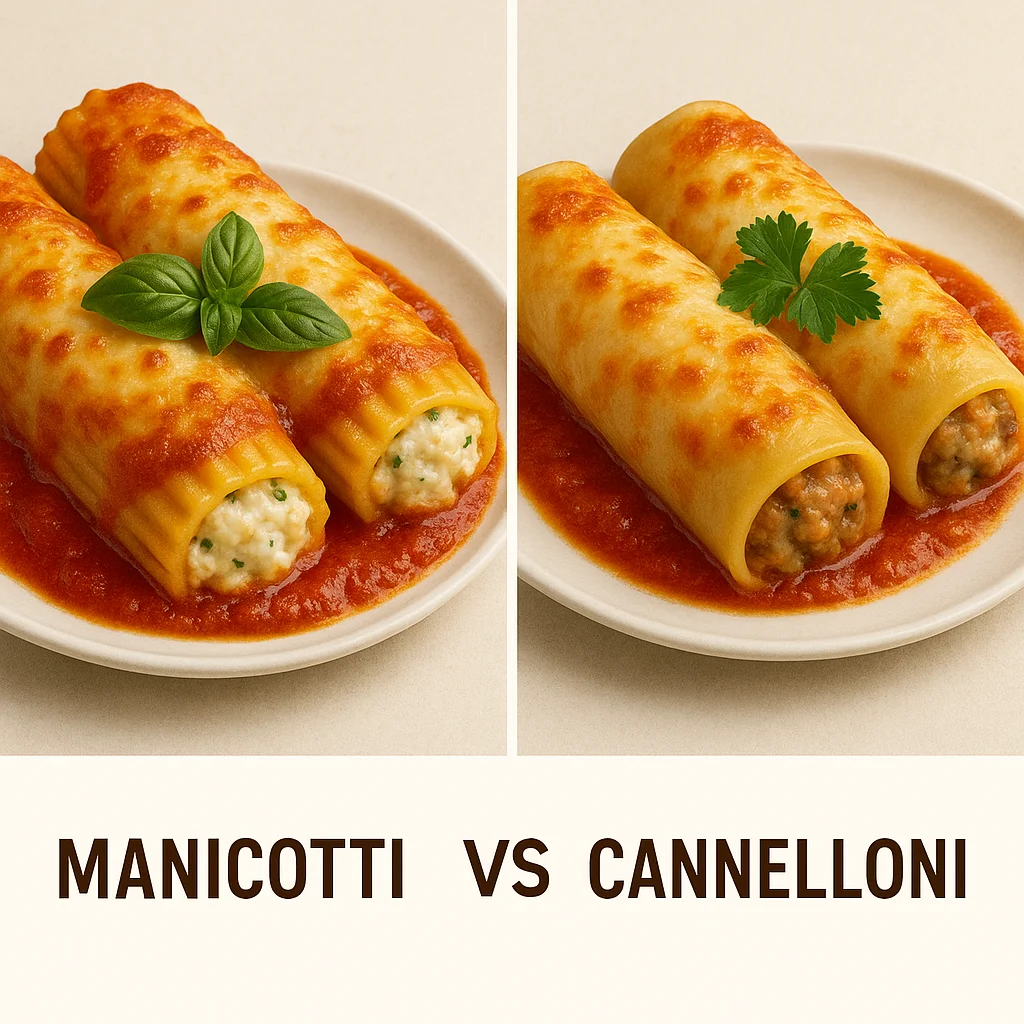Manicotti—those large, pasta tubes stuffed with rich fillings and baked in bubbling tomato sauce—are more than just comfort food. They carry a story of tradition, migration, and evolution. In this article, we’ll explore the history of manicotti, tracing its roots through old-world Italy, across the ocean to America, and into the modern kitchen. Let’s take a delicious journey through time.
What Is Manicotti?
The word manicotti means “little sleeves” in Italian. It’s a fitting name for these tube-shaped pasta shells designed to hold generous fillings. Traditionally, manicotti are stuffed with a mix of ricotta cheese, mozzarella, and sometimes ground meat or spinach.
In Italy, however, the pasta used is often fresh and rolled out thin, more like crepes (called crespelle), while in the U.S., we see dry, pre-shaped tubes. Regardless of how it’s made, the heart of the dish lies in its simplicity: pasta, filling, and sauce baked together to perfection.
The Origins of Manicotti
The history of manicotti begins deep in Italy’s culinary past. While the specific dish called “manicotti” wasn’t widely named until more recent times, the idea of stuffing pasta has ancient roots.
Ancient Influences
Stuffed pasta dishes can be traced as far back as the Roman Empire, where early versions of dough-based meals were filled with meat or cheese. Over time, as pasta became a staple in Italian cuisine, variations of filled pasta evolved across different regions.
Manicotti in Traditional Italian Kitchens
Although many associate manicotti with Italian-American cooking, versions of it existed in Italy under different names—most notably cannelloni.
Regional Variations
In southern Italy, especially in Campania and Naples, rolled pasta stuffed with ricotta and baked in tomato sauce was a common Sunday or holiday meal. Fresh pasta sheets were filled and rolled by hand, often by grandmothers in family kitchens. These rolls weren’t always called manicotti, but the concept was strikingly similar.
Homemade Traditions
The process of making manicotti at home was a labor of love. Families would prepare large batches for special occasions. The filling typically included ricotta, parmesan, and herbs—simple, wholesome ingredients passed down through generations.
Manicotti’s Journey to America
The history of manicotti took a new turn when Italian immigrants came to the United States in the late 19th and early 20th centuries.
An Adapted Dish
In their new country, Italians found different ingredients and cooking equipment. Pre-made pasta tubes became available in American grocery stores. These ready-to-fill manicotti noodles became a convenient and popular alternative to hand-rolled pasta sheets.
Embraced by a New Culture
Manicotti quickly became a household favorite. It fit the American love for hearty, cheese-filled meals while keeping a connection to Italian roots. By the mid-20th century, manicotti had become a staple of Italian-American restaurant menus and family dinners alike.
Manicotti vs. Cannelloni: Clearing the Confusion
While researching the history of manicotti, one often encounters another similar dish—cannelloni.
What’s the Difference?
- Manicotti is typically a pre-formed, ridged tube sold in American grocery stores.
- Cannelloni is the Italian counterpart, usually made by rolling fresh pasta sheets into cylinders.
In terms of filling and taste, the two are almost identical. The main difference lies in preparation and terminology. In Italy, manicotti is rarely used as a term—cannelloni is preferred.
Modern Takes on Manicotti
Today, manicotti continues to evolve. While traditional recipes remain popular, many modern twists exist.
New Fillings and Flavors
Cooks now experiment with all kinds of fillings:
- Vegetarian: Spinach and ricotta, mushroom medleys
- Vegan: Tofu ricotta, cashew cheese
- Protein-packed: Chicken, sausage, even seafood
Tomato sauce is still the classic, but Alfredo and pesto sauces are gaining traction in newer recipes.
Cultural Significance of Manicotti
Manicotti is more than a meal—it’s a symbol of heritage, family, and comfort.
A Dish for Special Days
In many Italian-American households, manicotti is a holiday favorite—served on Christmas, Easter, or during Sunday family dinners. It represents gathering, sharing, and passing down traditions.
Comfort Food with Roots
For many, the smell of manicotti baking in the oven brings back childhood memories. It’s the taste of home, no matter where that home might be.
Conclusion
The history of manicotti tells a tale of transformation—born from humble Italian kitchens, shaped by migration, and reinvented by generations. From hand-rolled pasta in Naples to oven-ready tubes in American pantries, manicotti has traveled far while staying close to its roots. Whether you prefer the traditional or the modern version, this beloved dish continues to bring warmth, flavor, and history to the table.


